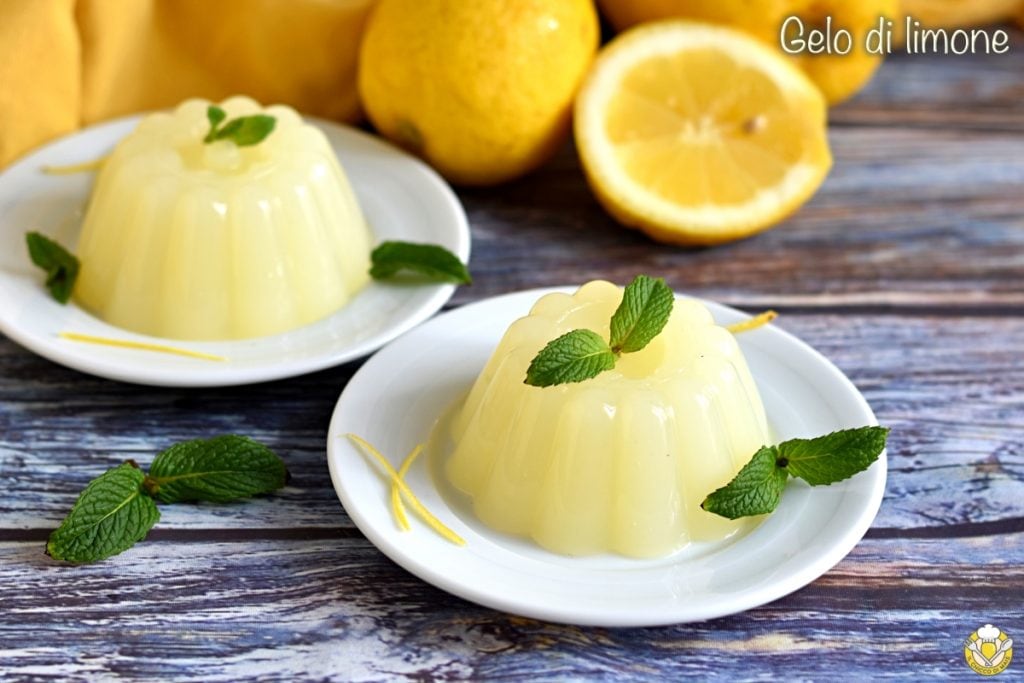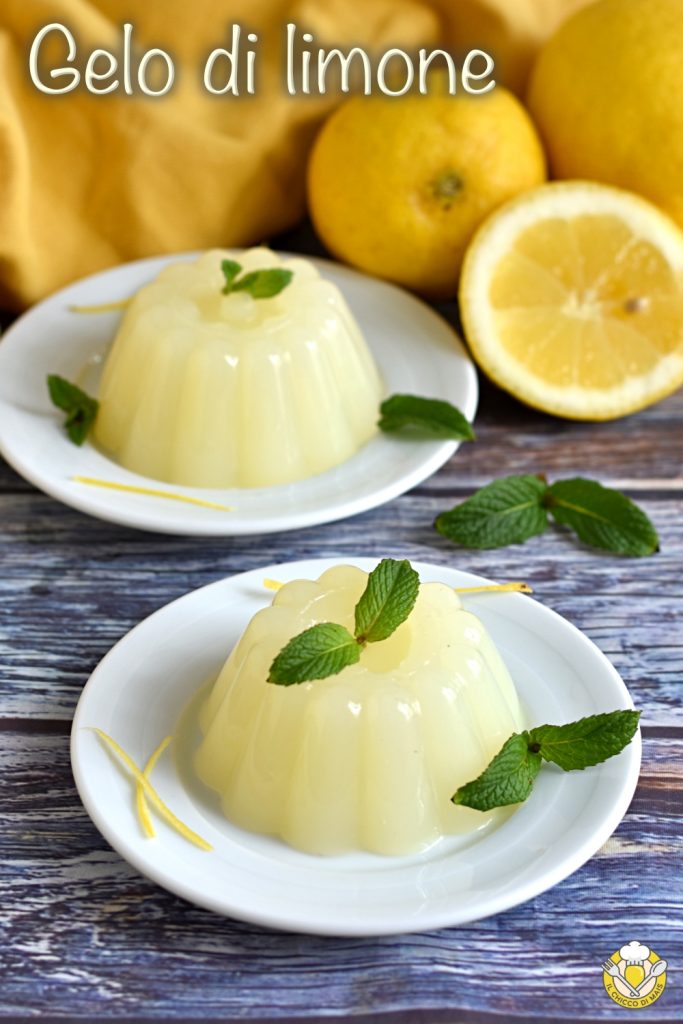The Sicilian lemon jelly is a typical Sicilian dessert, perfect to serve at the end of a meal, especially after a hearty lunch or dinner. Fresh, digestive, and with a citrus flavor, this lemon pudding is ideal for cleansing the palate and concluding the meal lightly. Like all Sicilian “jellies” – from watermelon jelly to orange jelly or strawberry – lemon jelly also has the consistency of a soft, velvety pudding, achieved using a natural thickener like starch (corn, rice, or wheat), instead of gelatin. This makes it a vegetarian dessert, suitable also for those following a vegetarian diet. One of its strengths is simplicity: only 3 ingredients are needed for Sicilian lemon jelly: lemons, cornstarch, and sugar. A minimal recipe, perfect even when you have few ingredients at home but want a genuine and refreshing dessert. For an extra touch, you can garnish it with fresh mint leaves, chopped pistachios, or seasonal strawberries: perfect pairings that enhance the citrus flavor of lemon. If you love lemon desserts or are looking for an easy and quick summer dessert, Sicilian lemon jelly is the recipe for you!
You might also be interested in:

- Difficulty: Very easy
- Cost: Very economical
- Rest time: 12 Hours
- Preparation time: 10 Minutes
- Portions: 2People
- Cooking methods: Oven
- Cuisine: Italian Regional
- Region: Sicily
- Seasonality: All seasons
- Energy 154.15 (Kcal)
- Carbohydrates 40.95 (g) of which sugars 32.40 (g)
- Proteins 0.12 (g)
- Fat 0.00 (g) of which saturated 0.00 (g)of which unsaturated 0.00 (g)
- Fibers 0.02 (g)
- Sodium 4.68 (mg)
Indicative values for a portion of 125 g processed in an automated way starting from the nutritional information available on the CREA* and FoodData Central** databases. It is not food and / or nutritional advice.
* CREATES Food and Nutrition Research Center: https://www.crea.gov.it/alimenti-e-nutrizione https://www.alimentinutrizione.it ** U.S. Department of Agriculture, Agricultural Research Service. FoodData Central, 2019. https://fdc.nal.usda.gov
Ingredients for 2 lemon jelly puddings
If you are celiac, make sure the cornstarch is labeled “gluten-free.”
- 2.4 oz lemon juice (about 2)
- 3/4 cup water
- 3 tbsp sugar
- 1.4 tbsp cornstarch
- A few leaves mint (for decoration)
Tools
- 1 Vegetable Peeler
- 1 Bowl
- 1 Citrus Juicer
- 1 Strainer
- 1 Saucepan with thick bottom
- 1 Wooden Spoon
- 2 Moulds single-portion pudding
How to prepare Sicilian lemon jelly
To prepare the lemon jelly, start by thoroughly washing the lemons. Choose untreated lemons, as you will need both the peel and the juice. Using a vegetable peeler or a sharp knife, remove the peel from 2 lemons, being careful not to cut into the white part (1). This would give the jelly a bitter taste. Pour 3/4 cup of water into a bowl and add the lemon peels (2). Let them steep for 4-6 hours, preferably overnight. After the time has passed, remove the peels and set the water aside (3).

Using a citrus juicer, squeeze the lemons (4), then strain the juice through a strainer (5) to remove pulp and seeds. Measure the juice obtained, you need exactly 2.4 oz (6).

In a saucepan with a thick bottom, combine the cornstarch and sugar and mix briefly (7). Gradually add the lemon juice (8), stirring with a wooden spoon to dissolve the cornstarch perfectly, without forming lumps. Once the mixture is smooth and homogeneous, also add the water in which the peels were steeped (9) and mix well.

Place the mixture on the stove over low heat (10) and bring it to a gentle boil, stirring constantly. Cook it for 4-5 minutes, continuously stirring, until the jelly has a thicker consistency (11). Turn off the heat and distribute the mixture into 2 pudding moulds (12). The ones I used are very practical because they have a screw-on top that makes it easy when you demould the puddings. Alternatively, you can use two disposable aluminum moulds that you can easily cut to demould the dessert.

Let the lemon jelly cool first at room temperature, then refrigerate for 6 hours. When serving the puddings, invert them onto a plate and gently demould. Decorate with a few fresh mint leaves.

Storage
The lemon jelly can be stored in the refrigerator for 3 or 4 days. It is not advisable to freeze it.
Tips and Variations
Some recipes suggest boiling the lemon peels in water for a few minutes instead of steeping. This is a practical solution as it allows you to prepare the dessert just a few hours ahead of serving, but keep in mind that boiling causes some of the water to evaporate, so it should be measured again before adding it to the other ingredients.

